Pamidronic acid
Synonym(s):N-[2-[[4-[3-[(1-Methylethyl)amino]-2-pyridinyl]-1-piperazinyl]carbonyl]-1H-indol-5-yl]methanesulfonamide mesylate;Rescriptor
- CAS NO.:40391-99-9
- Empirical Formula: C3H11NO7P2
- Molecular Weight: 235.07
- MDL number: MFCD00168777
- EINECS: 254-905-2
- SAFETY DATA SHEET (SDS)
- Update Date: 2024-11-19 23:02:33
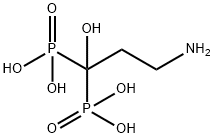
What is Pamidronic acid ?
Absorption
In patients with a creatinine clearance >90mL/min, a 90mg intravenous dose reached a Cmax of 1.92±1.08μg/mL, with a Tmax of 4h, and an AUC of 10.2±6.95μg*h/mL.
In patients with a creatinine clearance 61-90mL/min, a 90mg intravenous dose reached a Cmax of 1.86±0.50μg/mL, with a Tmax of 4h, and an AUC of 10.7—3.91μg*h/mL.[A203264
In patients with a creatinine clearance 30-60mL/min, a 90mg intravenous dose reached a Cmax of 1.84±0.58μg/mL, with a Tmax of 4h, and an AUC of 10.1±3.38μg*h/mL.
In patients with a creatinine clearance <30mL/min, a 90mg intravenous dose reached a Cmax of 1.93±0.53μg/mL, with a Tmax of 4h, and an AUC of 34.0±8.37μg*h/mL.
Toxicity
Patients experiencing and overdose may present with hypocalcemia, fever, hypotension, and taste perversion. Overdose can be managed by symptomatic and supportive treatment which may include the administration of steroids and intravenous calcium.
Chemical properties
White Solid
Originator
Aredia,Novartis,India
The Uses of Pamidronic acid
anticancer
The Uses of Pamidronic acid
A biphosphonate bone resorption inhibitor.
Background
Pamidronic acid is a second generation, nitrogen containing bisphosphonate similar to neridronic acid and alendronic acid. Pamidronic acid was first described in the literature in 1977. The second generation bisphosphonates are less common as third generation bisphosphonates, such as ibandronic acid, zoledronic acid, minodronic acid, and risedronic acid are becoming more popular.
Pamidronic acid was granted FDA approval on 31 October 1991.
Indications
Pamidronate is indicated to treat moderate to severe hypercalcemia of malignancy, moderate to severe Paget's disease of bone, osteolytic bone metastases of breast cancer, and osteolytic lesions of multiple myeloma.
What are the applications of Application
Pamidronic acid is A biphosphonate bone resorption inhibitor.
Definition
ChEBI: Pamidronate is a phosphonoacetic acid.
Manufacturing Process
For a batch size of 5 L, 587.5 g (3.2 moles) of mannitol is dissolved in 3.5 L of water. Pamidronic acid (31.6 g, 0.133 moles) is mixed with a 1.0 L aliquot of the mannitol solution to form a slurry. The slurry is then transferred into the remainder of the mannitol solution, and stirred for at least 15 min. Aqueous 1 N sodium hydroxide (270 ml) is then added and the mixture is stirred until a clear, colorless solution results. The pH is then adjusted to 6.50.1 using either 1 M aqueous phosphoric acid or 1 N aqueous sodium hydroxide, as needed. The solution is then filtered through a 0.22 micron filter, and filled at 20°C into vials at 4.0 ml (4.172 g)/vial, under sterile conditions. The aqueous solution is frozen at -37°C and lyophilized (20 mbar, 20°-40°C) to yield 1,250 vials, each containing 30 mg of amorphous disodium pamidronate. The vials are sealed under positive nitrogen pressure. The disodium pamidronate is amorphous (noncrystalline) by X-ray diffraction and contains 0.7 wt-% water.
brand name
Rescriptor (Agouron).
Therapeutic Function
Bone resorption suppressant
Pharmacokinetics
Pamidronic acid is a second generation, nitrogen containing bisphosphonate that inhibits osteoclast mediated bone loss It has a wide therapeutic index and a long duration of action as it can be given every 3-4 weeks for certain indications. Patients should be counselled regarding the risk of elevated blood urea nitrogen, renal tubular necrosis, and nephrotoxicity.
Metabolism
Pamidronate is not metabolized in vivo.
Properties of Pamidronic acid
| Melting point: | 226-228°C |
| Boiling point: | 658.7±65.0 °C(Predicted) |
| Density | 1.998±0.06 g/cm3(Predicted) |
| storage temp. | under inert gas (nitrogen or Argon) at 2–8 °C |
| solubility | Methanol (Very Slightly, Heated, Sonicated), Water (Slightly, Heated, Sonicated) |
| pka | 1.44±0.10(Predicted) |
| form | Solid |
| color | Light Brown to Beige |
| Stability: | Hygroscopic |
Safety information for Pamidronic acid
Computed Descriptors for Pamidronic acid
Pamidronic acid manufacturer
Rivashaa Agrotech Biopharma Pvt. Ltd.
New Products
(S)-3-Aminobutanenitrile hydrochloride 4-Methylphenylacetic acid N-Boc-D-alaninol N-BOC-D/L-ALANINOL 3-Morpholino-1-(4-nitrophenyl)-5,6-dihydropyridin- 2(1H)-one Furan-2,5-Dicarboxylic Acid Tropic acid S-2-CHLORO PROPIONIC ACID ETHYL ISOCYANOACETATE 2-Bromo-1,3-Bis(Dimethylamino)Trimethinium Hexafluorophosphate 4-IODO BENZOIC ACID 3-NITRO-2-METHYL ANILINE 1-(2,4-DICHLOROPHENYL) ETHANAMINE 4-Bromopyrazole 5,6-Dimethoxyindanone Tert-butyl bis(2-chloroethyl)carbamate (2-Hydroxyphenyl)acetonitrile 2-(Cyanocyclohexyl)acetic acid 4-methoxy-3,5-dinitropyridine 1-(4-(aminomethyl)benzyl)urea hydrochloride 2-aminopropyl benzoate hydrochloride diethyl 2-(2-((tertbutoxycarbonyl)amino) ethyl)malonate tert-butyl 4- (ureidomethyl)benzylcarbamate Ethyl-2-chloro((4-methoxyphenyl)hydrazono)acetateRelated products of tetrahydrofuran


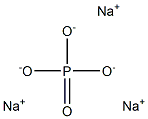


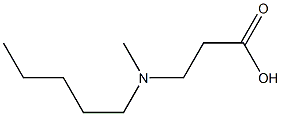


You may like
-
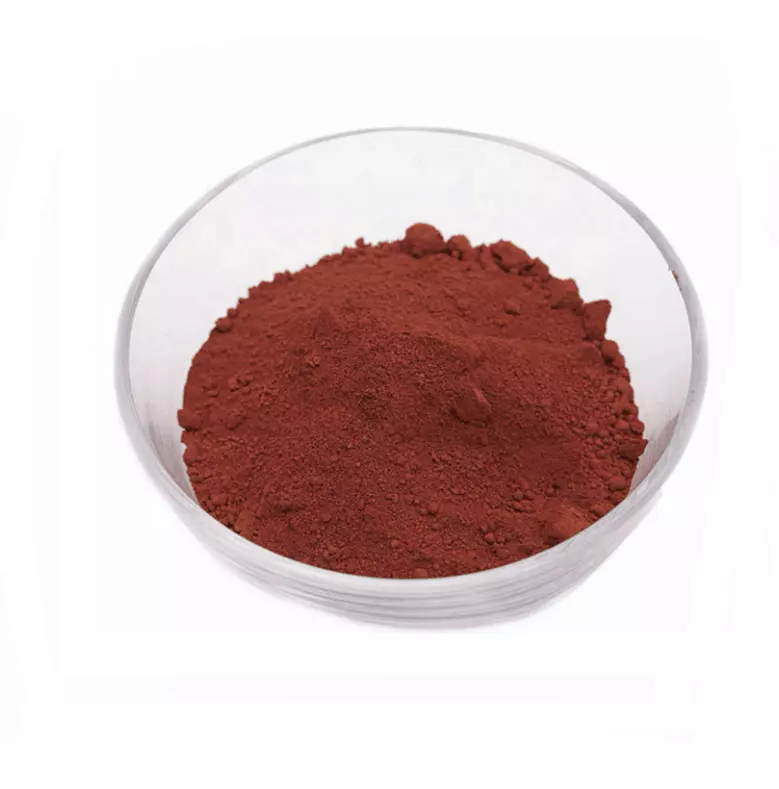 40391-99-9 Pamidronic acid 98%View Details
40391-99-9 Pamidronic acid 98%View Details
40391-99-9 -
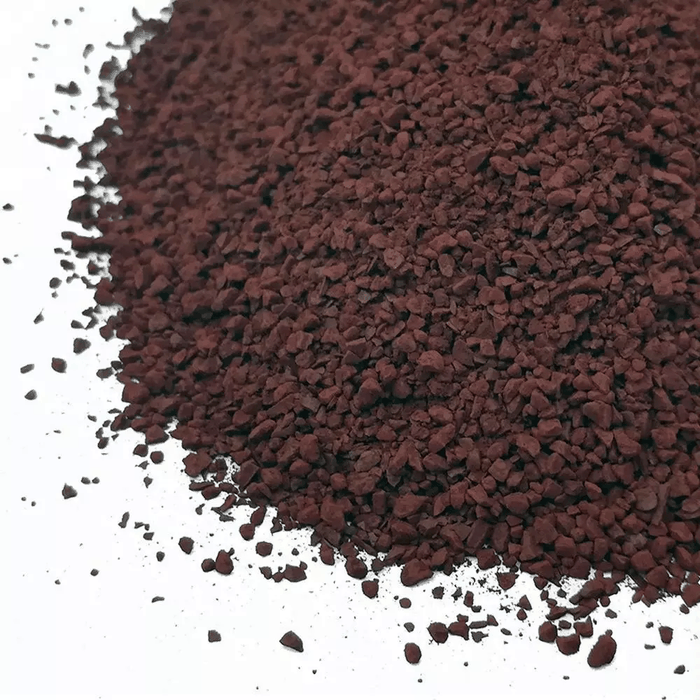 40391-99-9 98%View Details
40391-99-9 98%View Details
40391-99-9 -
 1975-50-4 98%View Details
1975-50-4 98%View Details
1975-50-4 -
 2-HYDROXY BENZYL ALCOHOL 98%View Details
2-HYDROXY BENZYL ALCOHOL 98%View Details
90-01-7 -
 2-Chloro-1,3-Bis(Dimethylamino)Trimethinium Hexafluorophosphate 221615-75-4 98%View Details
2-Chloro-1,3-Bis(Dimethylamino)Trimethinium Hexafluorophosphate 221615-75-4 98%View Details
221615-75-4 -
 61397-56-6 CIS BROMO BENZOATE 98%View Details
61397-56-6 CIS BROMO BENZOATE 98%View Details
61397-56-6 -
 14714-50-2 (2-Hydroxyphenyl)acetonitrile 98+View Details
14714-50-2 (2-Hydroxyphenyl)acetonitrile 98+View Details
14714-50-2 -
 118753-70-1 98+View Details
118753-70-1 98+View Details
118753-70-1